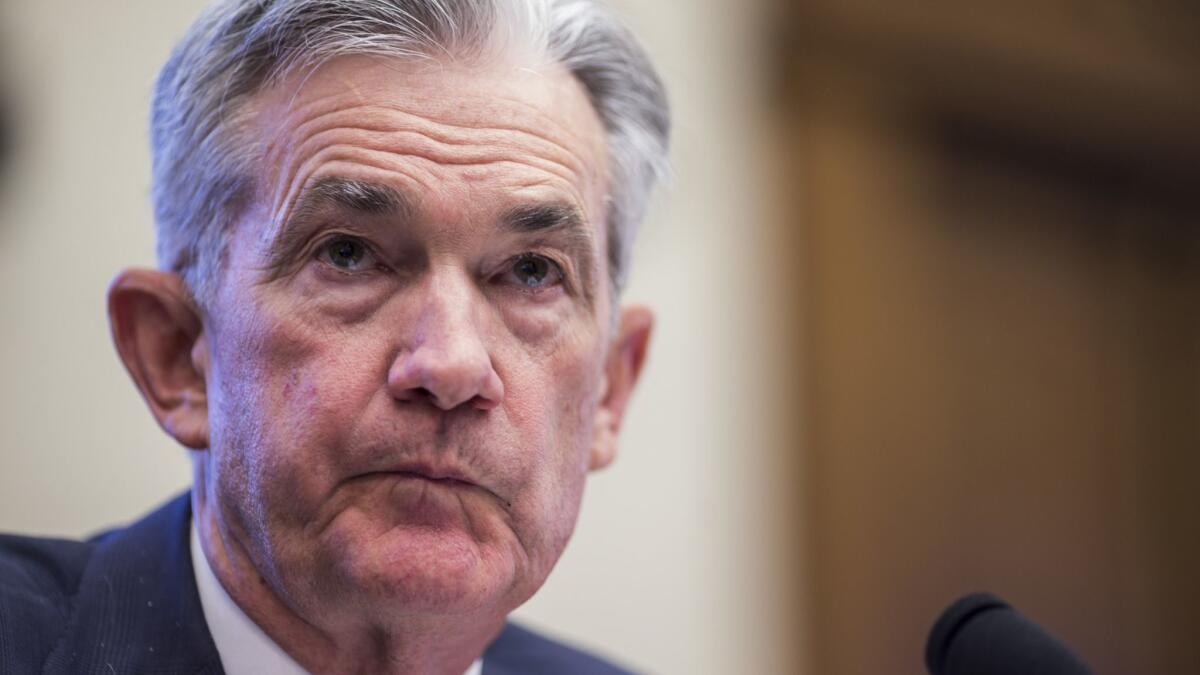Federal Reserve minutes show broad worries about the economy

- Share via
Most Federal Reserve officials expressed concern at a meeting last month that the outlook for the U.S. economy was weakening, and many said the Fed should soon cut interest rates if uncertainty continued to weigh on growth.
Some businesses, particularly in manufacturing, have pulled back on spending and hiring because of greater uncertainty about U.S. trade disputes, Fed officials said, according to minutes of the June 18-19 meeting released Wednesday. Slower global growth was also dragging on exports, they noted.
For many Fed policymakers, reducing short-term interest rates “would be warranted in the near term should these recent developments prove to be sustained,” the minutes say.
Fed Chairman Jerome H. Powell told lawmakers in testimony Wednesday that the economic outlook hasn’t improved since June’s meeting.
Powell’s statement Wednesday boosted the U.S. stock market. Many investors felt he confirmed their expectations that at its meeting late this month, the Fed will cut short-term interest rates for the first time in a decade. The rate is currently in a range of 2.25% to 2.5%. A cut could lift home and auto sales by lowering the borrowing costs for major purchases.
President Trump has repeatedly attacked the Fed for raising rates four times last year and has called for a cut of a full percentage point. Economists expect the reduction will probably be a quarter of a point.
The minutes showed widespread concern that the economy was losing steam. Nearly all officials cut their forecasts for the short-term rate that the Fed controls, compared with the previous meeting, the minutes said.
Many Fed officials said that “the economy appeared to have lost some momentum,” the minutes said, as business confidence, business spending and manufacturing activity all weakened.
Also of concern was that inflation fell further from its 2% target since the beginning of the year, the minutes said, and there were signs that investors and consumers expected inflation to remain low. That can make it harder for the Fed to push inflation, which fell to 1.5% last month, back to its target.
Several policymakers appeared to support cutting rates soon, essentially as an insurance policy, because it “could help cushion the effects of possible future adverse shocks to the economy.”
Several others also noted that the current low unemployment rate had yet to push up inflation, which suggested that the steady hiring of recent months isn’t likely to overheat the economy.
Some Fed officials, however, said that although they expected fewer rate hikes than they had in the past, “there was not yet a strong case for a rate cut from current levels.” And “a few” officials said that cutting rates just to push inflation a few tenths of a percentage point toward its target would also risk inflating bubbles in financial markets.
More to Read
Inside the business of entertainment
The Wide Shot brings you news, analysis and insights on everything from streaming wars to production — and what it all means for the future.
You may occasionally receive promotional content from the Los Angeles Times.










